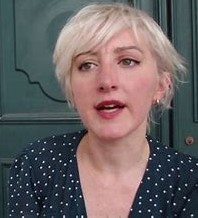Kamala Harris
Written by Tonya K. Grant
National Geographic Partners, 2022
Children who are only beginning to read independently can learn about Vice
President Kamala Harris in a new picture book published by National Geographic
Partners.
The book, “Kamala Harris,” is written at Level 2, which is for children who
are reading independently. It has short two- to four-page chapters and pictures
on every page. A couple pages list her “cool firsts” and another two list “cool
facts” about Harris. The book ends with a short quiz and a glossary.
The simplicity of the book makes it easy for young children. They may be
inspired by Harris. She is the first woman, the first black American, and the
first South Asian American to be elected vice president.
Harris was also the first to do other things. She was the first black
person and first woman to serve as attorney general of California. She was the first black woman and first South
Asian woman to serve as district attorney of San Francisco. And she was the first
Indian American to serve in the United States Senate.
The book also tells readers that she failed the test to become a lawyer
the first time she took it. She studied harder and passed the test when she
took it again. This also encourages children, showing them that they can be
successful even if they fail the first time they try something.
About
the Author
Tonya K. Grant is an elementary school librarian and former classroom teacher. She is committed to promoting reading and strives to inspire all children to read and see themselves in books. Her magazine credits include Clubhouse Jr., Highlights, and ParentLife. She’s also published in two books in the Chicken Soup for the Soul series. When she’s not reading or writing, she enjoys watching movies, knitting, and working out. She lives in McDonough, Georgia, with her husband and two sons. Follow her on Twitter - @TKGrant1










































